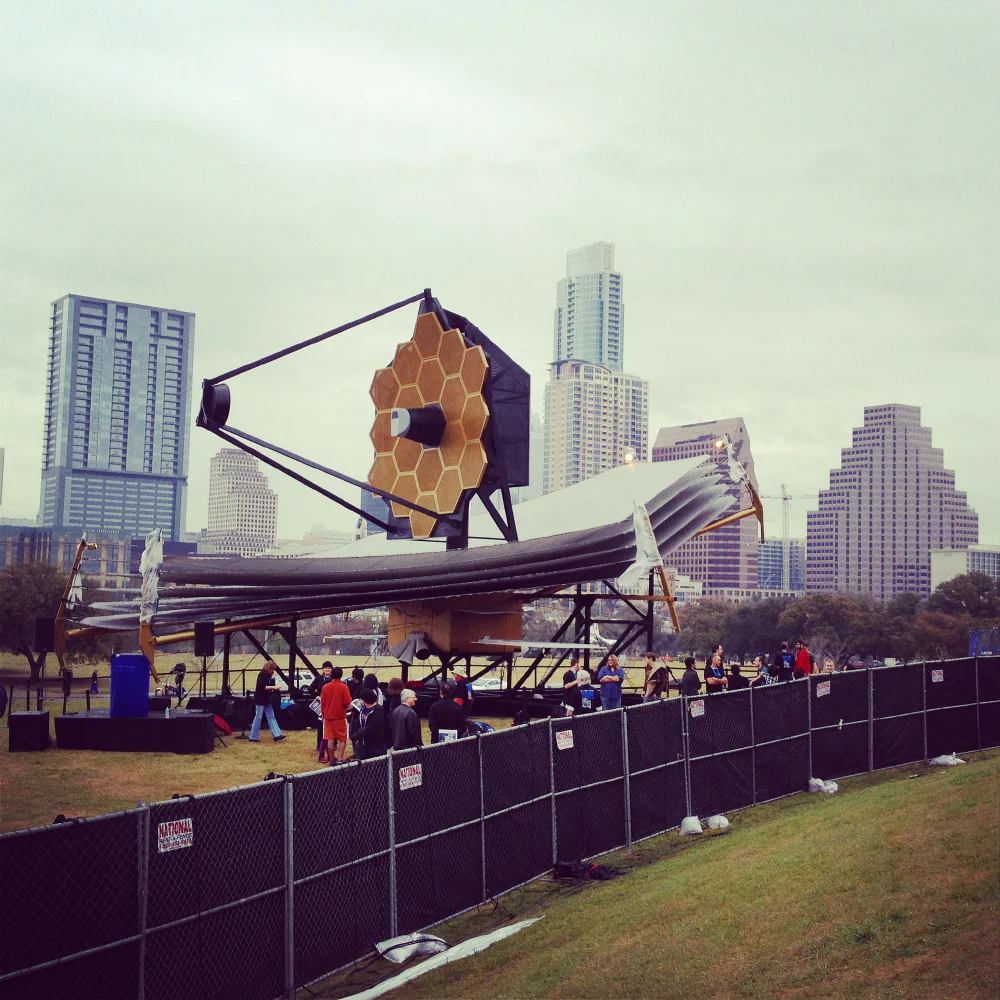Fictional spacecraft on the ground and real spacecraft in space

Watch a J.J. Abrams science fiction film and a recurring visual motif is the shot of a spaceship in a terrestrial setting. Whether it’s the shots of the Enterprise built on the Earth-based shipyards in Star Trek (2009), or wrecked Imperial Star Destroyers wedged into the ground of Jakku in Star Trek: The Force Awakens.
Humans, being terrestrial beings, find it easier to understand and experience things in the familiar context of land or sea, where there’s obvious up and a down. Things moving in space, on the other hand, are much trickier for the brain to contextualise. No doubt Abrams has this in mind when thinking about how to give his science fiction films mass commercial appeal.
When we think of the Hubble Telescope imaging distant galaxies away from the distorting effects of Earth’s atmosphere, we may have vague ideas of it being out there in space somewhere, but we don’t tend to think of it as just 350 miles above us, hurtling around the Earth at 18000 mph. But Hubble’s speed relative to us is irrelevent to its ability to capture light from the furthest objects in the observable Universe.
The James Webb Space Telescope is the successor to Hubble. With a larger mirror and more advanced optics it will look deeper into space and further back in time to the formation of the earliest galaxies, giving us a new, more humbling perspective of our place in the Universe.
While the general principles of the James Webb telescope are similar to Hubble - an optical scope gathering light at infrared wavelengths - its position in space is different. Instead of orbiting the Earth, it will orbit the Sun over 900,000 miles away from us, that’s nearly four times the distance of the Moon from the Earth. Scientists will achieve this by placing it around the L2 Lagrangian point, a position in the Sun-Earth gravitational system that will allow the telescope to maintain a relative position to Earth and avoid Earth’s shadow.
That cradle-like base you can see pictured isn’t a base (there’s no up or down remember?) but a solar shield. This will turn to face the Sun to keep the telescope in the shade at a chilly -267 Celsius. Without this the heat from the sensor itself would affect the infrared light it’s detecting from the early Universe.
In troubled geopolitical times, it’s good to see international scientific efforts to move humanity forward. Although worringly NASA has set back the launch date a number of times. Originally due to the launch this year, last year they reschuled it for 2019, and now it is schedules for a 2021 launch. As a joint project between NASA and ESA I hope it overcomes any hurdle put in its place by the Trump-Brexit axis of stupidity.
I will be watching hopefully.